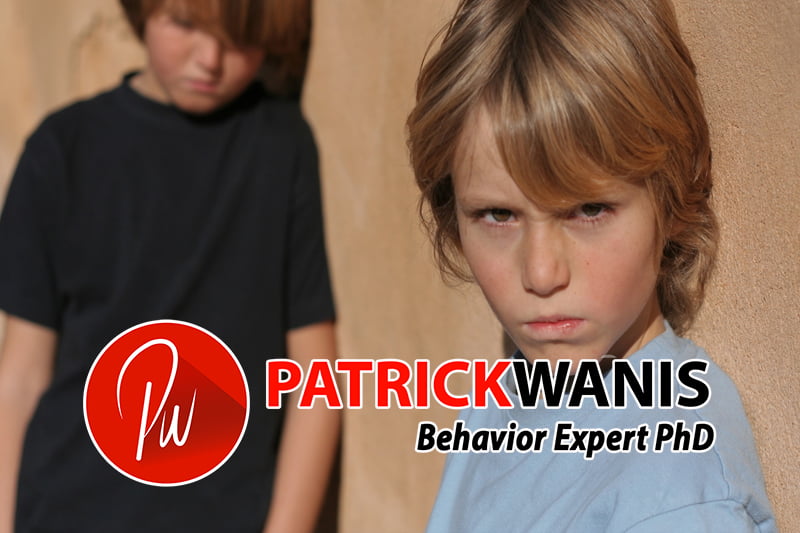
A study in Western Australia reveals that there is a new form of secret domestic violence – children are assaulting siblings and parents.
The report, by Women’s Health and Family Services reveals that in more than 2000 cases ¬reported between 2009 and 2014 police charged adolescents (10-17) with assault and other acts of violence against their siblings, parents and care-givers. There were 181 arrests of adolescents for domestic sexual assault.
Parents are being abused by their children and are too ashamed to report it to police and authorities.
People working in the field have known for a long time that children are also involved as perpetrators of domestic violence.
Why?
1. Surrounded by violence
Many children are already growing up in families and environments of violence i.e. they themselves were victims of violence or they have witnessed violence within the family and accordingly they learn to express and respond with violence; they repeat what they see and what they experience – violent behavior. Hostility and constant conflicts within the family can also lead to violent behavior by the children.
Further, I have young clients who were sexually abused by an older sibling who was sexually abused by someone else in the family. One client was a male who was sexually abused by an older sister.
2. Unmet needs/mental health problems
The child’s emotional and psychological needs are not being met, and many children suffer from mental health problems but are not receiving adequate help if any at all – depression, post-traumatic stress disorder, substance abuse problems, and anxiety disorder. Note that the greatest group at risk is single mothers.
3. Feelings of shame/alienation
Third, the primary psychological cause of violence is shame. In other words, these children experience feelings of being disrespected, demeaned & debased, feeling insignificant, worthless leads to feelings of shame that then trigger anger and then violence. Children also need to be adequately taught to understand and regulate their emotions as well as their responses to their emotions.
“Traditionally, most people think of family violence as being perpetrated by men against women, but it is the case that more recently we’ve become more aware of the violence perpetrated by women and young people, sons and daughters, and that is particularly stigmatizing for families.”
– Women’s Health and Family Services project officer Sarah Broadhead
4. Negative/neglective parenting
Poor parenting styles also lead to domestic violence – the parent is absent, overwhelmed, too lax or overly aggressive or authoritarian. Children need guidance, boundaries, limits and discipline to develop as well as to feel safe and secure. A lack of guidance and discipline also leads to anxiety which can often be expressed as violence – acting out.
5. Abandonment, insecurity, stress
A lack of security, stability and a safe environment due to a breakdown in the nuclear family. As the study revealed the most at risk group is single mothers. Single mothers are forced to raise one or more children on their own while also trying to be the provider and the disciplinarian. Financial stress, long hours at work, physical and emotional fatigue means children receive less time, attention and guidance. This, in turn, creates feelings in children of abandonment and being worthless and unlovable. Poverty can result in negative parenting and in turn, lead to youthful violence.
I have worked with children who became violent because they lacked a strong male figure, felt rejected by father and were full of self-loathing as well as hatred for the world.
“Research shows that 50 per cent of those children that are perpetrating violence against their parents were probably subject to family domestic violence when they were growing up…These young people are going to be the next generation of perpetrators, unfortunately.” – Women’s Health and Family Services project officer Sarah Broadhead
6. Shame and repeating abuse
Children who were beaten by a parent will often beat a younger sibling as a way of feeling power and as an attempt to lessen the subconscious feelings of shame and humiliation.
7. Enmeshment, emotional strain
The expectation of a child to meet the emotional needs of a single parent can also result in violent behavior as the child tries to break free from the pressure and chains of the parent. This can also be connected to Emotional Incest and Enmeshment.
The first step in the solution and prevention of domestic violence by children is early intervention and reeducation. Early intervention refers to programs that recognize quickly that children are being raised in a setting of abusive, hostile, and negligent parenting. Early intervention also refers to programs and specific help for children suffering from mental health problems as well as hostile or abusive situations.
Parents need to be observant of their child’s behaviors – depression, isolation, anger, aggressiveness and acting-out are all signs of potential violent behavior. Each one of us needs to be observant of children who might be living in hostile, neglectful or abusive homes. Intervening early and rescuing the child from such situations can prevent the cycle of domestic violence and from the child engaging and participating in that cycle as an instigator/perpetrator of the violence.
Human Behavior Expert
Patrick Wanis PhD
www.patrickwanis.com
Additional reading:
Youth Violence: Do Parents and Families Make a Difference?
Anointed “The Woman Expert” by WGN Chicago, Patrick Wanis PhD is a renowned Celebrity Life Coach, Human Behavior & Relationship Expert who developed SRTT therapy (Subconscious Rapid Transformation Technique) and is teaching it to other practitioners. Wanis’ clientele ranges from celebrities and CEOs to housewives and teenagers. CNN, BBC, FOX News, MSNBC & major news outlets worldwide consult Wanis for his expert insights and analysis on sexuality, human behavior and women’s issues. Wanis is the first person ever to do hypnotherapy on national TV – on the Montel Williams show.
